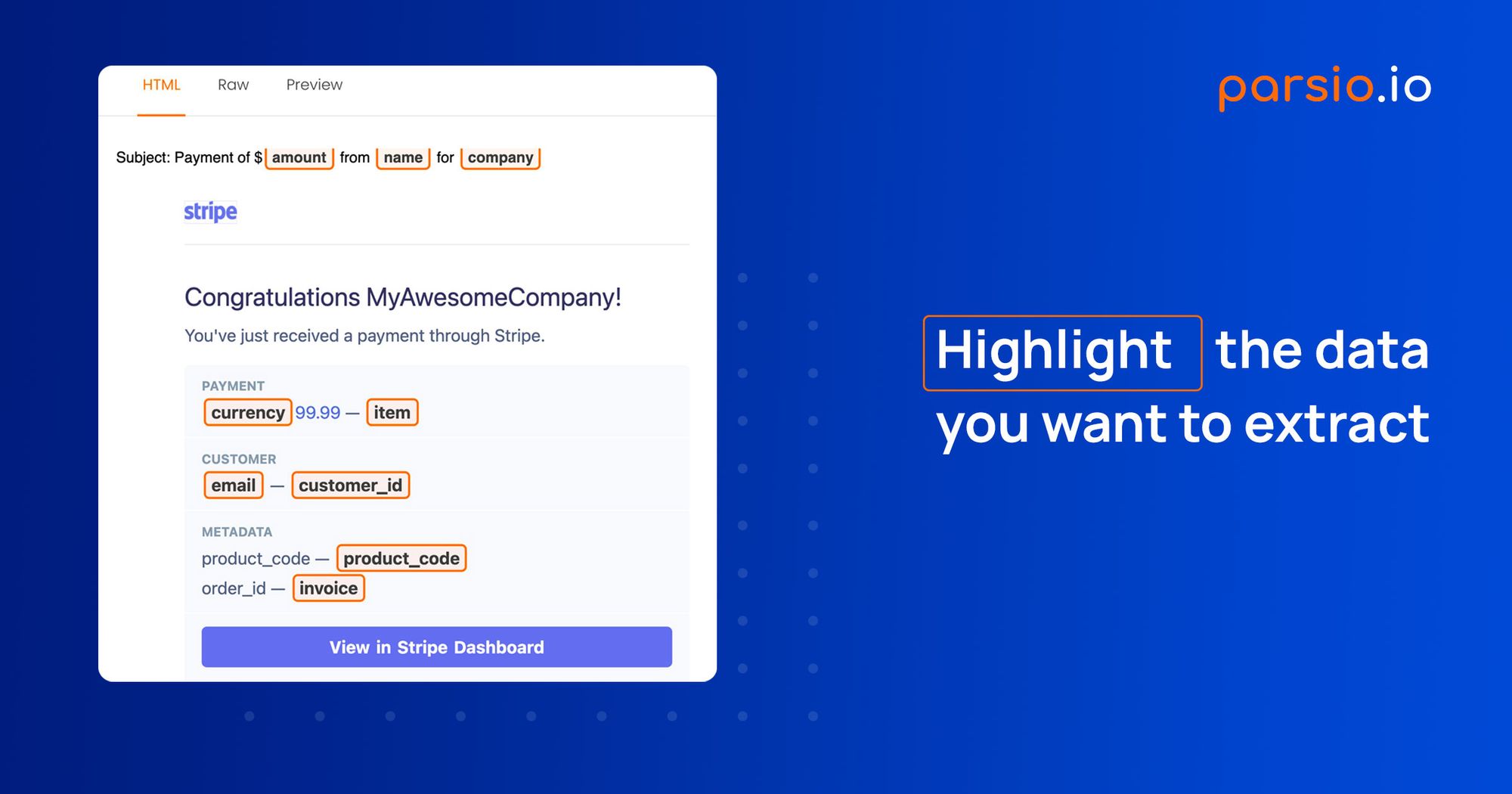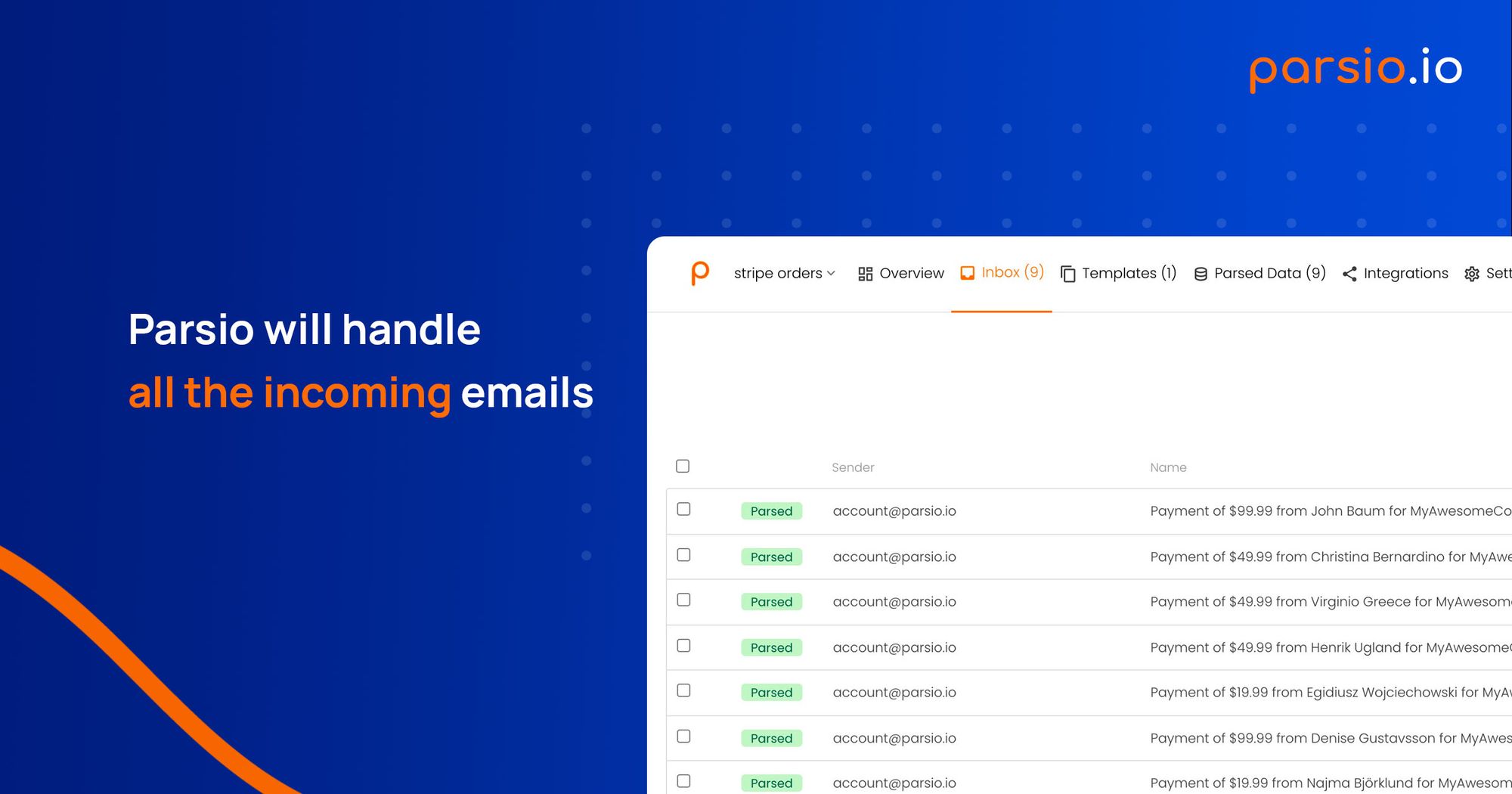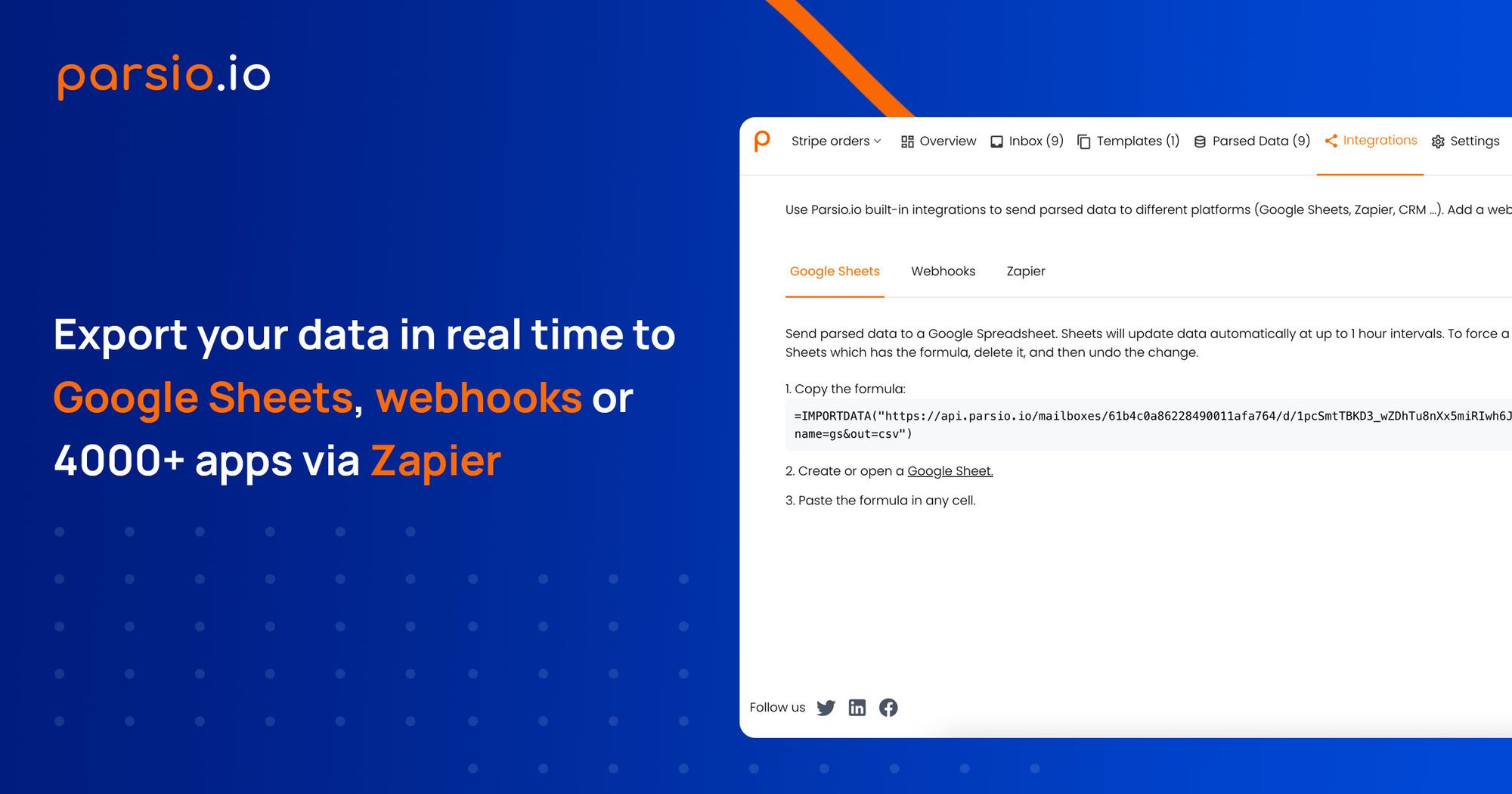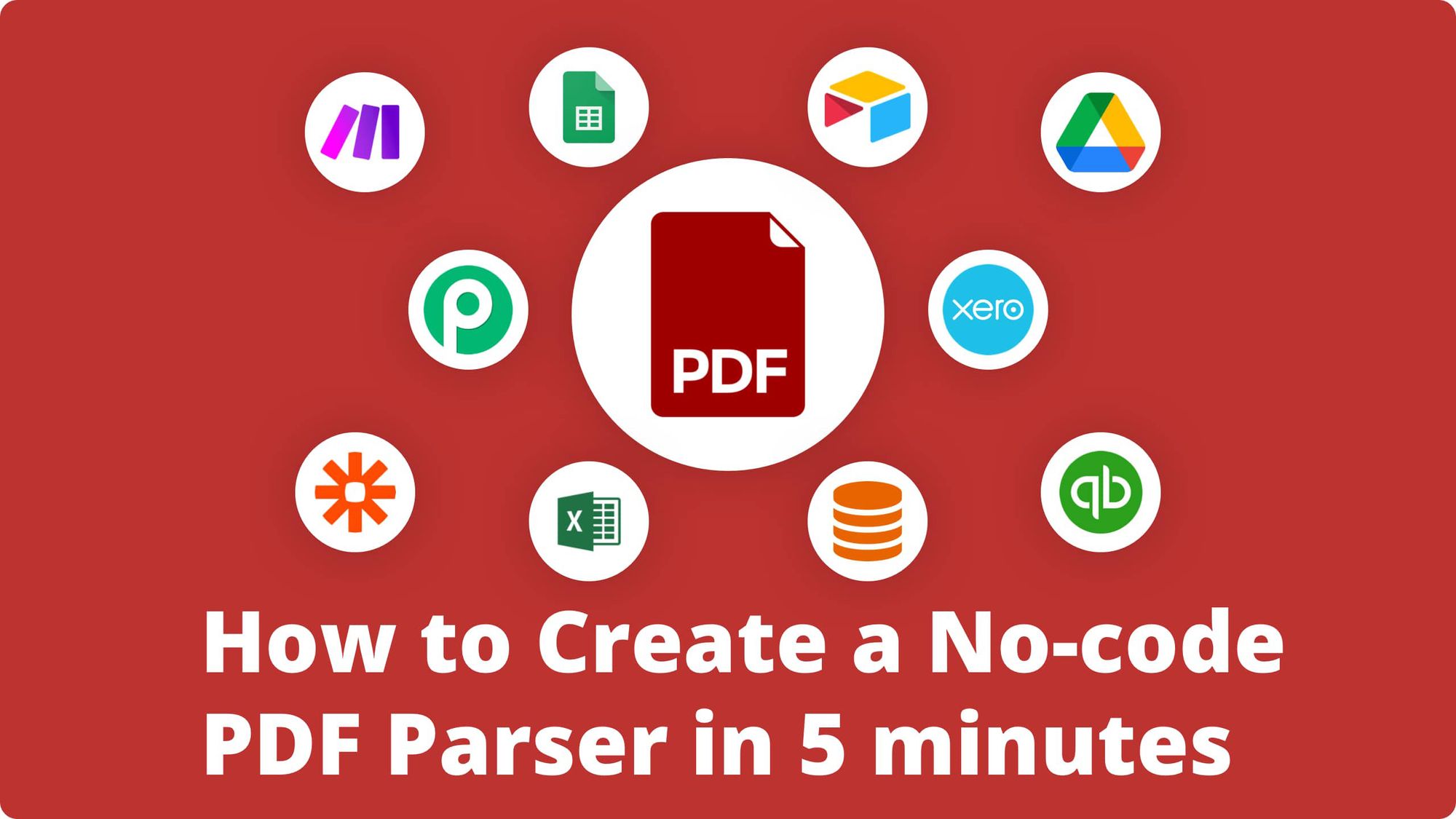What is an Email Parser? The Ultimate Guide to Email Parsing

It’s no secret that business owners receive hundreds of emails per month with the information that they need to extract manually. A marketplace seller can have no possibility to export financial statements or client contact data at once in an Excel file. However, all this information is contained in his new sale notification emails.
That’s where an email parser can step in and help extract and consolidate all the information in real time.
What is an email parser?
In a nutshell, an email parser is a tool that extracts data automatically from similar emails. It is also able to parse information directly from email attachments such as PDF, CSV, Word and Excel files.
You can then export the parsed data in real time to a CRM, marketing platform, Google Sheets, Database using an automated workflow.
What are the benefits of email parsing?
Email parsers have a wide range of benefits since they allow you to:
- Save on employee costs: when you have an automated email parsing software, you don’t have to hire data entry staff or assign these tasks to other employees.
- Guarantee better quality: with an email parser all of your data is 100% accurate whilst even the best manual data entry expert can’t be 100% accurate.
- Manage multiplied workload during holiday seasons: email parsing can help to manage the increased workflow by extracting data from all the incoming emails so that you have nothing to worry about other than making your customers happy.
- Faster processing time: your parsing software will keep running even when you or your employees are unavailable.
How to automate your business with email parsing? Use cases.
There are many businesses that can get benefits from using an email parser: real estate agencies, e-commerce owners, marketplace sellers (Etsy, eBay, Amazon), crypto traders, marketing agencies, AirBnB renters, IoT and smart device owners and much more. Here are some concrete examples:
- Real estate agencies can automatically export leads from emails coming from different platforms and consolidate them in a CRM.
- Online sellers on Etsy can automatically import their clients data into a marketing platform and subscribe clients to newsletters.
- E-commerce owners can create financial reports from order confirmation emails.
- AirBnb managers can parse booking details and create booking calendars.
- A CTO can parse alert messages and send Slack notifications.
What information email parsers can extract?
An email parser can extract almost any kind of information from the email body and attachments: order data (order amount, ordered items, quantities), leads and customer data (email, phone, address) booking information (guests number, booking dates, comments), financial data (account balances, transactions) and many more.
You can also extract metadata: timestamps (when email was received), sender email address, recipient email address, reply to address, sender name, subject, headers.
Is email parsing like web scraping?
Email parsing is similar to web scraping.
A web scrapper is a program (a bot) that collects information from the web. A web scraper pulls data from sources, such as databases or websites, and then dumps the information into a database for analysis.
An email parser processes similar emails, extracts important information and exports it to another platform or a file.
Both approaches create structured data from unstructured data.
What else you can do with an E-mail Parser?
Emails to Google Spreadsheet
Parse the important email details (such as customer name, email, ordered items, order amount, etc) and transfer the data directly to Google Sheet or Excel in an automated way.
Leads to CRM
Using different forms in various places for your business? No worries, you can parse the required data from the emails you’ll receive when a new entry gets registered on any form and add them to your CRM right away in seconds.
Digital Receipts to Account Books
Get your expense details by parsing the PDF from email content and adding them to Zoho books to keep track of the accounts easily.
Google Alerts to Slack
Get the real-time Google alert notification to your Slack channel by parsing the content from your email alerts and sending them to the Slack channel without a wait.
Booking Details to Calendar
If a customer books a room on your stay, then you can parse the relevant data like the date from the confirmation email and add them to Google Calendar automatically.
What types of emails parsers exist?
We can distinguish 3 types of email parsers:
1. Custom email parsers are created to use internally in a company. Most often, it can process only one of a few types of email. They are hard to implement and support.
2. Generic rule-based email parsers. Example: EmailParser. To parse an email, you should create so-called “rules“ to find a piece of data you want to extract. They are robust and easy to use for simple cases. However, if you need to parse long or complex emails, it may take up to a few hours for initial setup.
3. Generic template-based email parsers. Example: Parsio. They are the most advanced, intuitive, and easy to use. You only need to highlight the data to extract.
What is Parsio and How to create an email parser?
Parsio is an advanced email parser tools that is extremely easy to use and can help you automate you workflow as well as save your time and money.



Let’s see how you can configure your own email parser with Parsio:
- Create a special Parsio email inbox and send a sample email.
- On a sample email, create a template: simply highlight the fields you want to extract.
- Configure an auto-forwarding.
- It’s all set up! Parsio will start automatically extracting the data from all the similar incoming emails.
With Parsio you can extract data from emails and attachments (PDF, Word, Excel, TXT, CSV,...). You can then just download the parsed data into a file (Excel, CSV, JSON), sync it with a Google Spreadsheet. Finally, there is quite a number of apps (4000+) you can integrate Parsio with, thus eliminating manual data entry and run your business more efficiently.
Stay parsed with Parsio!
Read next:


